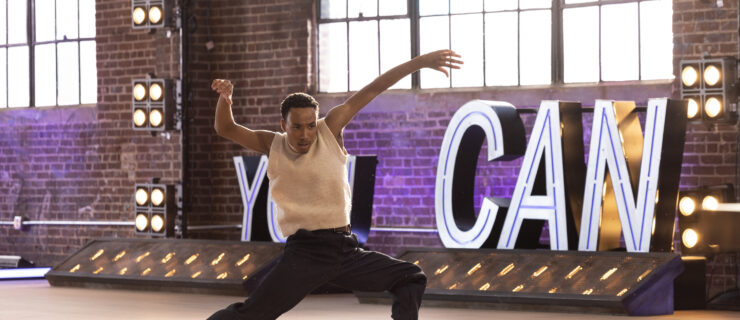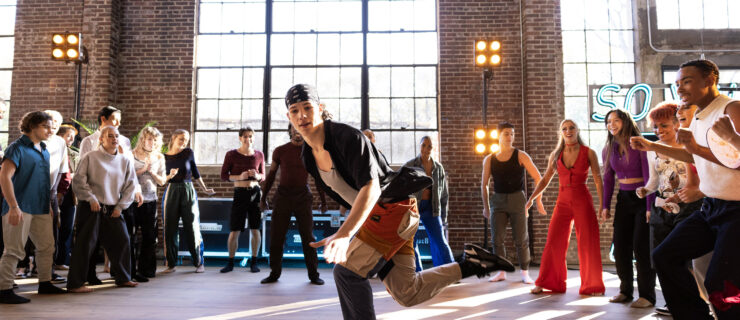Coming Down Easy
Any parachuter will tell you that the adrenaline rush that comes from jumping out of a plane is often followed by an intense feeling of let-down after landing. The same thing happens when you finish a big show. Performers of all kinds know there’s very little logic to those icky feelings that come creeping in the days and weeks after performance. You just did something extraordinary—shouldn’t you feel great?
The symptoms of post-performance depression vary widely: Some people feel sad, while others gain or lose weight. Some can’t sleep; others can’t stop sleeping. Many dancers feel worthless or can’t focus (even enough to read through this paragraph!).
During these in-between, lowdown times, NYC-based dancer and choreographer Miguel Gutierrez of Miguel Gutierrez and the Powerful People says his inner monologue is, “What’s next? What now? What happened? What do I do with all this time?” Though ups and downs will always be a part of a performer’s life, here are a few things that might help out when in-between-gig-ness has got you down.
Recognize the chemistry
.
When you perform, a large amount of epinephrine (or adrenaline) gets released into your brain. This “fight or flight” hormone helps you dance to the best of your abilities. The levels of other brain chemicals (or neurotransmitters) such as dopamine and serotonin are also tweaked when you’re in an excited state. When you come down from that high, your brain holds back certain chemicals and boosts up others to get everything back into shape. In other words, some of the sadness you feel is part of your body’s natural rebalancing act. Factor in some emotional healing time, just like you would for a pulled muscle, and ease up on yourself.
Use time to your advantage
.
Instead of seeing free time as a testament to your lack of success, it’s important to view it as an opportunity. When you’re in the thick of rehearsals and performances, it’s common to say, “If I only had a little more time, I’d…” Keep track of those things, whether they’re dance-related or not. Then when some downtime comes your way, you’ve finally got a chance to explore some of that stuff. Dancer Jennifer Dunne (currently appearing in Curtains on Broadway) says, “I use the unemployment time to really assess my skills and try to improve.” In-between time can be a great opportunity to slow down, check in with yourself and figure out where you want to go next.
Do something else completely.
Have you ever found that you get so obsessed with the next competition or convention that you forget that there’s a whole world of other wonderful things out there? Try devoting some of your in-between time to something entirely noncompetitive. Dancer Brittany Marcin, also a Curtains dancer, makes jewelry and encourages dancers to have other hobbies: “It helps to be a well-rounded person, which in turn makes you a well-rounded performer,” she says. Whether it’s taking a cooking class, learning Russian, exploring a nearby town or starting an herb garden, sometimes rediscovering the joy of doing simple, noncompetitive things will help you to step back and get a little perspective on your dancing.
Find out what she’s up to.
When you’re not performing, your old friend jealousy can tell you to stay 100 feet from anyone else who’s in the spotlight. Bite the bullet and go anyway. Broadway dancer and teacher Mary Ann Lamb (also currently in Curtains) says, “I love to see other peoples’ shows. The only downfall is it’s a Catch-22 because you don’t have much money when you’re not working.” Supporting your fellow dancers as they support you is not only generous (and part of what makes a strong community), it often inspires and encourages you when you’re down.
Go back to class.
Your Nutcracker performances are over and the holidays are upon you. What do you do after spending some quality time with the fam? Head back to class. Not only will it keep you in the groove, you might pick up some new steps. Albert Stephenson, a dance teacher at Circle in the Square Theater School in NYC, says that all dancers should go back to class after a show finishes in order to keep their body’s muscle memory firing. Find a class with a positive, encouraging atmosphere so you’ll feel comfortable jumping back into it, even when your spirits are low.
Volunteer.
It might take some research to iron out the details, but volunteering your talent is a great way to stay connected and help out at the same time. “I love to volunteer for choreographers who need help with new works. I also participate in benefits that raise money and awareness for different causes,” Marcin says. “You never know who you’ll meet.” Websites, bulletin boards and local papers are all good places to find out where you can volunteer.
Talk it out.
Both depression and pride can keep you from telling someone when you’re feeling down in the dumps after you’ve finished a project. Try giving your legs a rest and letting your tongue do the dancing. Tell a friend, fellow dancer, sibling, parent or therapist exactly how you’re feeling (but make sure it’s someone you can be totally honest with). Communicating what you’re going through will probably give you some insight. Former American Ballet Theatre corps member Erin Ackert says, “Misery loves company—that’s why professional dancers in NYC of all genres tend to gather at one Upper West Side spot when performing is thin: STEPS on Broadway.” Like most other dancers, Ackert finds that talking to people who are in similar situations makes her feel less alone.
Last Words
The fact is that if you love what you’re doing, not doing it doesn’t feel good. Since there aren’t any activities that we can do 24/7 (besides breathing), it’s important to realize that “in-between time” is a part of life. We need to accept it and remind ourselves that without it we couldn’t do our best during the “up” time. Of course, if you’re really in a funk, you should talk to someone as soon as you can, but if it’s that standard, post-gig “ugh” that we all know so well, go easy on yourself. Come on now…you did good!



